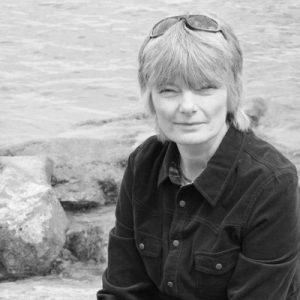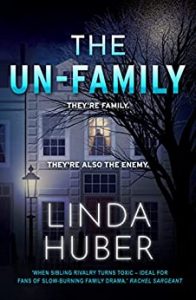Crime vs. Feel-Good Fiction
Crime vs. Feel-Good Fiction
 “Write what you know” wasn’t a concept in my life when I was a child. I was in the Brownie Guides, about to start working on my first ever Brownie badge – the Writers’ Badge, the only one that didn’t look scarily impossible to my seven-year-old self. I had to write a story, a letter, and I think there was something else too – maybe an invitation? With great enthusiasm I wrote my story about a girl called Susan who lived on a farm. This, from a child who had lived all her life in inner city Glasgow… I passed the badge, though, and more importantly, I kindled a love of writing that’s been with me ever since.
“Write what you know” wasn’t a concept in my life when I was a child. I was in the Brownie Guides, about to start working on my first ever Brownie badge – the Writers’ Badge, the only one that didn’t look scarily impossible to my seven-year-old self. I had to write a story, a letter, and I think there was something else too – maybe an invitation? With great enthusiasm I wrote my story about a girl called Susan who lived on a farm. This, from a child who had lived all her life in inner city Glasgow… I passed the badge, though, and more importantly, I kindled a love of writing that’s been with me ever since.
Fast-forward a decade or two, and I was looking at my (pen) name in print for the first time, as one of many who start their career writing stories for women’s magazines. My stories were short and definitely feel-good. It began as a bet with myself that I could write a story a magazine would accept, and my first few attempts taught me a valuable lesson. Writing what I thought was a good short story was no use – I had to write what the magazine thought was good.
Once I’d sorted that out, I was on my way, and in the next few years I had over fifty feel-good stories and articles published. I was still doing that when I discovered the American writer Mary Higgins Clark, and with her came the love of my writing life: psychological suspense fiction, deliciously creepy and addictive. I devoured everything she wrote, then one day, I started to pen my own “Mary Higgins Clark”. It took another ten years of tweaking, rewriting and tearing my hair out before that book was published, and in that time, I zig-zagged back and forth between writing suspense and feel-good fiction. For me, the latter isn’t rom-com or chic-lit; it’s a story set in the real world, about ordinary people who have the same wishes and problems we all have, with a positive (preferably happy) ending.
No matter which genre I’m writing in; the important thing is the characters. Whether they’re helping Grandma find her missing cat (and meeting Mr Right in the process), or agonising over the feeling that someone might be stalking them, if the reader identifies with a character in some way, the book will catch their interest. This doesn’t mean pages of character description; it just means creating real, believable people and giving them (in feel-good fiction too) enough conflict in their lives to make them interesting even before the plot gets started. It needn’t be a huge conflict, something like loneliness after a friend moves abroad, or guilt about not having time for the family is enough. It’s the small, daily conflicts that readers identify with. In my suspense writing, the main plot is then layered on top of the character development and conflict. One of the best writing tips I was ever given was: Before you start writing, note down ten things about each main character that the reader never finds out. This makes the character more real to you, and it will affect how you write about them.
Once my first book was published, suspense took over all my writing time, and it was only by accident that I got back into feel-good fiction. A group of writers I’d met on social media, the Write Romantics, were putting a charity anthology together, and asked me to contribute a story, which of course I did. That book started me thinking about my own magazine stories, over fifty in all, and I held the digital rights. I could make a charity book too… Putting a selection of stories together made me fall in love with feel-good fiction all over again, so in between suspense books I wrote a short series about Stacy who goes on holiday to Switzerland and ends up with no fiancé and a job in a failing hotel. Hopefully, I’ll be self-publishing these in 2023. Nowadays, I’m a real hybrid author, with traditionally published suspense books as well as self-published ones and a few that spent a number of years with a digital publisher before joining my self-published list when rights returned to me.
Writing in different genres has pros and cons. Somehow, after the first draft, I always have to work through my suspense novels and remove the too-feel-good sections. I guess these sneak in because I love my characters and want them to be happy. It doesn’t apply the other way around – my feel-good characters never have to worry about secretly murderous partners or terrible family secrets, and they’re easier to create because they’re part of the real world in a way the suspense characters aren’t. Thankfully, not many people have those secretly murderous partners…
I honestly couldn’t say which genre I enjoy writing more. Suspense feels more substantial, but you can get into dark places writing it. On the other hand, the smaller conflicts of feel-good fiction can make it harder to manage. The end goal should be in sight but tantalisingly unreachable, whereas with suspense, the ending is often a “twist you won’t see coming”.
What am I working on now? After three years of pandemic during which I had three suspense novels published by the wonderful Hobeck Books, it’s feel-good all the way. For the moment…
Linda Huber bio:
Linda Huber grew up in Glasgow, Scotland, but went to work in Switzerland for a year aged twenty-two, and has lived there ever since. Her day jobs have included working as a physiotherapist in hospitals and schools for handicapped children, and teaching English in a medieval castle. Her writing career began in the nineties, when she had over fifty short stories published in women’s magazines before turning to psychological suspense fiction. The Un-Family is her twelfth novel. Linda’s latest project is a series of feel-good novels, set on the banks of Lake Constance and just minutes from her home in north-east Switzerland. She really appreciates having the views enjoyed by her characters right on her own doorstep!
Facebook: https://www.facebook.com/authorlindahuber
Twitter: https://twitter.com/LindaHuber19
website: http://lindahuber.net/
THE UN-FAMILY
 ‘When sibling rivalry turns toxic – ideal for fans of slow-burning family drama.’ RACHEL SARGEANT, BESTSELLING AUTHOR OF THE PERFECT NEIGHBOURS
‘When sibling rivalry turns toxic – ideal for fans of slow-burning family drama.’ RACHEL SARGEANT, BESTSELLING AUTHOR OF THE PERFECT NEIGHBOURS
‘We can’t choose our families. But blood runs thicker, and all that. In a dysfunctional family, we’re always rooting for the children, because they didn’t choose to be there. Especially a teenager like Megan whose life has been full of tragedy. Megan finds herself amongst a chaotic mix of relatives, some of whom are unhinged and unrelenting in their attempts to rectify old grievances. She’s vulnerable. Unsafe. And just when you think things can’t get any worse, her nightmare is about to intensify. The Un-Family is a domestic thriller you will not be able to put down.’ LOUISE MANGOS
‘Murder, intrigue, and a tangled web of secrets and lies, The Un-Family has it all!’ JANE ISAAC
‘The Un-Family is utterly compelling psychological suspense. Linda Huber is an expert in this genre and I knew I’d be hooked from page one…. Tense, tense, tense and highly recommended!’ CLARE CHASE
For better, for worse
Wildlife vet Holly’s life seems blissful: husband Dylan is the man of her dreams, she has a rewarding career and a lovely home. And yet, a tiny niggle is growing daily. Dylan is becoming increasingly remote – but why? Holly is determined to mend the fissure in their relationship. But a shocking discovery changes everything…
Family ties
Then there’s Dylan’s family: his wayward twin Seth and their widowed mother Elaine, who is rather fond of a glass or two of sherry. Nothing in Elaine’s life is easy, bringing up teenage granddaughter Megan while the family grieves the loss of Megan’s mother.
Family lies
A tragic event rocks the foundations of the family, and Holly’s life starts to unravel. Dylan drifts ever further away. Megan is left uncertain and alone, while Seth falls deeper into himself.
The bonds that once bound the family together are breaking. Can they ever be repaired?
BUY HERE
Category: How To and Tips






















